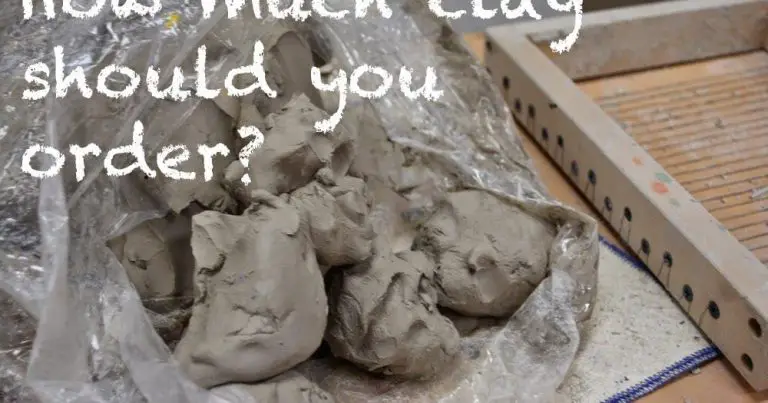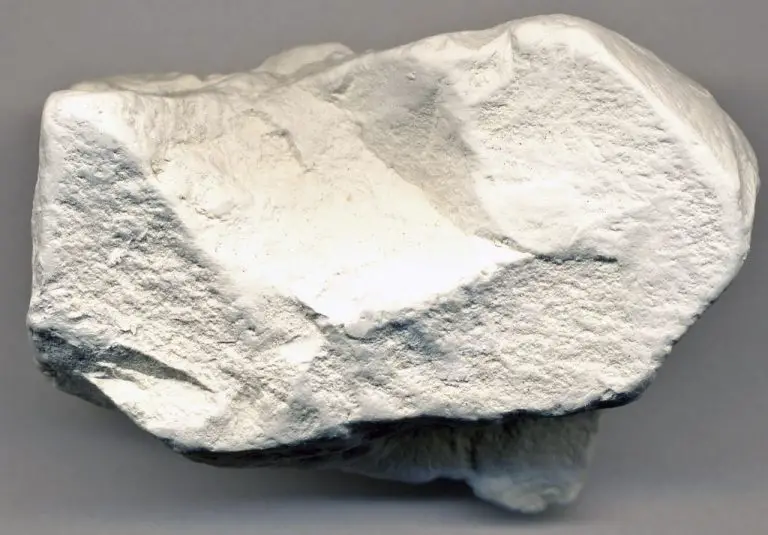What Is Red Clay Mainly Made Up Of?
Red clay is a type of soil that gets its distinctive red color from the presence of iron oxides. It is an extremely common type of soil found across the world. While all red clay contains iron oxides, the exact chemical composition can vary based on the geographic location and local geology.
Composition
Red clay is composed primarily of iron oxides, clay particles, silica, and alumina. The iron oxides, which give red clay its distinctive red color, make up a significant portion of the composition. The main iron oxides found in red clay are hematite and goethite. Hematite contains about 70% iron and gives red clay its bright red hues, while goethite contains about 63% iron and lends red clay brownish-yellow tones.
In addition to iron oxides, red clay contains clay particles formed from weathered rock. These clay particles are composed of hydrous aluminum phyllosilicates, a class of minerals that contain silicon, aluminum, and oxygen arranged in layered sheets. The clay particles are very small, less than .002 mm in diameter. This gives red clay its smooth, fine texture.
Other major constituents of red clay include silica in the form of quartz particles and alumina in the form of aluminum oxides. Smaller amounts of other minerals and trace elements can also be found in red clay, but iron oxides, clay particles, silica, and alumina make up the bulk of its composition.
Iron Oxides
Iron oxide minerals give red clay its distinctive red hue. The most common iron oxides found in red clays are hematite and maghemite. Hematite contains iron in the Fe2O3 form and often appears as a red powder. Maghemite has a similar chemical structure but contains iron as Fe2O3 along with some Fe3+ vacancy sites in its crystal lattice. The iron in these minerals causes them to absorb certain wavelengths of light, resulting in their red color. Both hematite and maghemite are formed when iron bearing minerals are altered through weathering processes. The concentration and type of iron oxides present determine the exact shade of red of a clay deposit. Higher iron oxide content typically correlates to a brighter, richer red color.
Clay Particles
Red clay gets its distinctive red hue from the presence of iron oxides, but the core component of all types of clay is the clay particles themselves. Clay particles in red clay are extremely small in size, generally measuring less than 0.002 millimeters in diameter. That’s over 100 times smaller than a grain of sand! These tiny clay particles have a flat, sheet-like structure that gives clay its soft, smooth, plastic texture when wet. The small size and plate-like shape also give clay particles a very high surface area relative to their volume. This high surface area allows the clay particles to interact strongly with water as well as positively and negatively charged ions. It’s the interactions between the clay particles, iron oxides, water, and other minerals that give red clay its unique set of properties.
Silica
Silica is one of the primary constituents of red clay, making up 45-65% of its composition. Red clays contain high amounts of quartz, a crystalline form of silica. The silica content gives red clay its gritty texture and contributes to the clay’s structural stability and resistance to shrinkage when fired at high temperatures. The abundant silica makes red clay ideal for pottery and ceramics as it can withstand multiple firings without warping or breaking down. Chemically, silica occurs in clay deposits in the form of silicon dioxide (SiO2). The mineral quartz has the chemical formula SiO2 and is the second most common mineral in the earth’s continental crust behind feldspar. Red clay deposits form over long periods of time from the weathering of quartz-rich parent rock like granite, which breaks down into fine particles. The weathering process concentrates quartz and silica over time.
Alumina
Alumina, chemical formula Al2O3, is another major component of red clay. Alumina is an oxide of aluminum and is commonly found in nature as corundum or bauxite. In red clay, alumina ranges from about 10-20% of the composition. The alumina content in red clay contributes to several important properties:
- Hardness – Alumina is a very hard substance that increases the overall hardness and durability of red clay.
- Plasticity – Alumina promotes plasticity and workability of the clay when mixed with water.
- Strength – The alumina provides strength once the red clay is fired, resulting in a dense and solid ceramic material.
- Color – Iron oxides contribute reddish hues to the clay, while alumina provides a lighter, whiter color.
The relatively high alumina percentage is one factor that makes red clay well-suited for pottery and ceramic applications. Adjusting the alumina content can help control the final properties of clay products.
Other Minerals
In addition to iron oxides, clay particles, silica, and alumina, red clay contains various other mineral compounds in smaller amounts. These include:
- Titanium oxides – Contribute to the red and orange hues.
- Magnesium oxides – Bind particles together.
- Calcium oxides – Important for fertility and structure.
- Potassium oxides – Vital for cation exchange capacity.
- Sodium oxides – Aid in retaining moisture.
The specific concentrations of these minerals can vary between red clay deposits based on the environmental conditions present during formation. But they play key roles in influencing the physical and chemical properties of the soil.
Trace Elements
Red clay contains tiny amounts of various trace elements that give it unique properties. These include:
- Copper – Gives red clay some antibacterial properties
- Manganese – Helps bind the clay particles together
- Cobalt – Provides some coloration
- Zinc – Improves moisture retention
- Chromium – Adds greenish tints to the red color
The concentrations of these trace elements are very small, often less than 1%. But they have an important impact on the nature and uses of red clay. The variety and balance of trace elements contributes to the richness of red clay’s color, texture, and functionality.
Geographic Locations
Red clay deposits are found in several regions around the world. Some of the main geographic locations where red clay is abundant include:
– The southeastern United States, especially Georgia, Alabama, Mississippi, and Florida. This region contains rich deposits of red clay that give the soil its distinctive red hue.
– Tropical regions of Africa, including countries such as Nigeria, Ghana, and Ivory Coast. The tropical climate contributes to the weathering process that produces the iron oxide-rich red clays.
– Brazil, especially in the Amazon River basin. The highly weathered soils in this tropical region contain significant amounts of red clay particles.
– Central China and southeastern Australia are also known for their red clay deposits due to the hot, wet climates that promote soil weathering.
– Areas with basalt bedrock tend to produce red clays as the iron-rich basalt weathers and breaks down into fine particles.
– Ancient lake beds and deltas may contain accumulations of red clay sediments washed in from surrounding soils over time.
Uses
Red clay has a variety of important uses and applications thanks to its unique composition and properties:
– Pottery and Ceramics: The pure and uniform texture makes red clay an ideal material for shaping and glazing into pottery and ceramic items. It has been used for centuries around the world for making tableware, sculptures, tiles, and decorative pieces.
– Construction Materials: Bricks, roof tiles, and floor tiles made from red clay are durable, attractive, and environmentally friendly building materials. The high iron oxide content gives red clay construction products their distinctive hue.
– Paints & Cosmetics: Crushed red clay is used as a pigment and added to paints, makeup, and other cosmetics to provide an earthy red tone. This natural alternative offers a non-toxic source of red color.
– Medicine: Traditional healing practices utilize red clay for its absorbent properties. When mixed into a paste, it can be applied topically to treat skin conditions or made into tonics for internal detoxification.
– Filtration & Waste Treatment: The absorption capacity of red clay makes it useful for filtering contaminants and absorbing odors. It can help filter wastewater from industrial processes.
– Horticulture: As a soil amendment, red clay adds nutrients as well as improved drainage and aeration for plant growth. The iron content provides a source of micronutrients that are beneficial for many plants.




